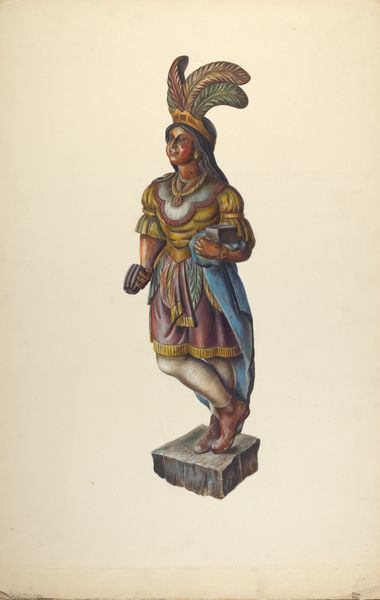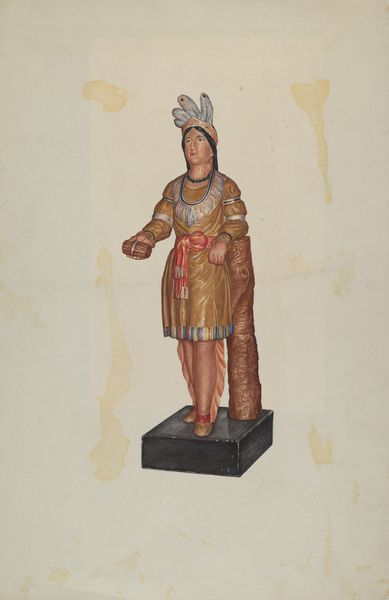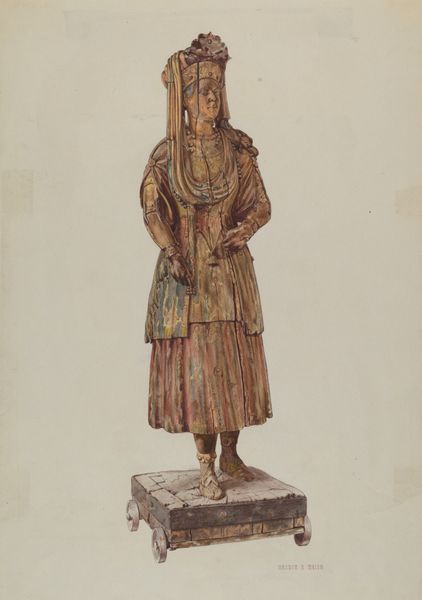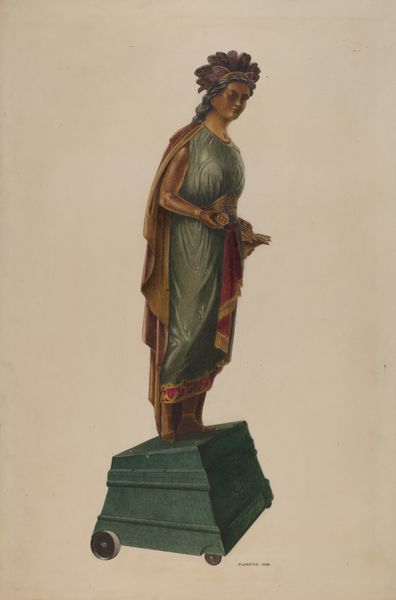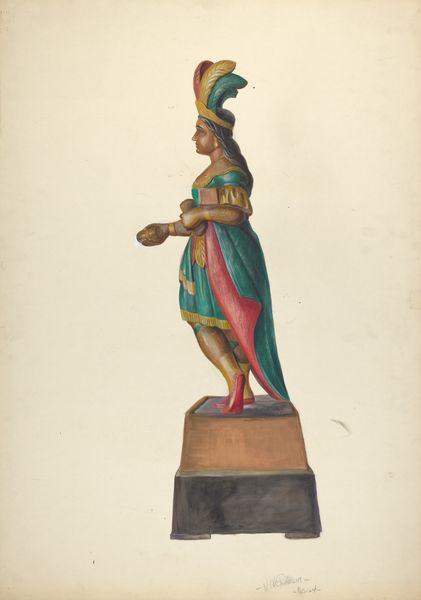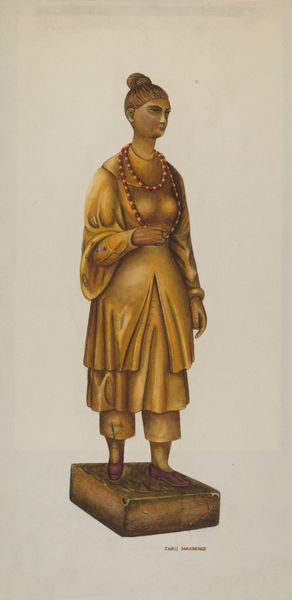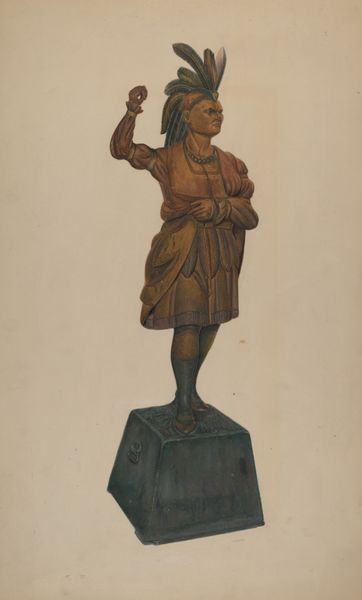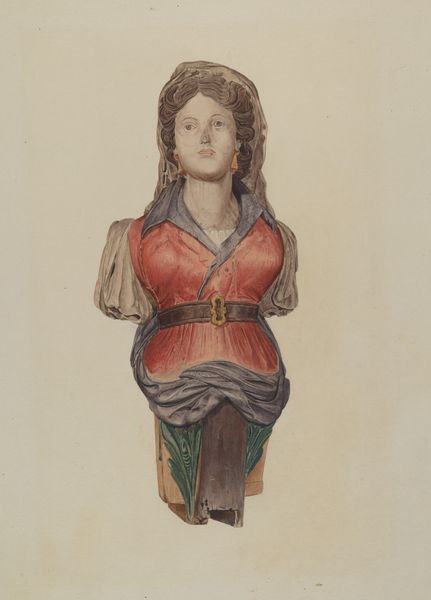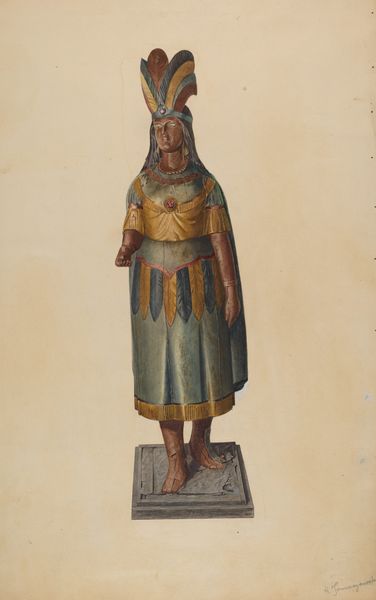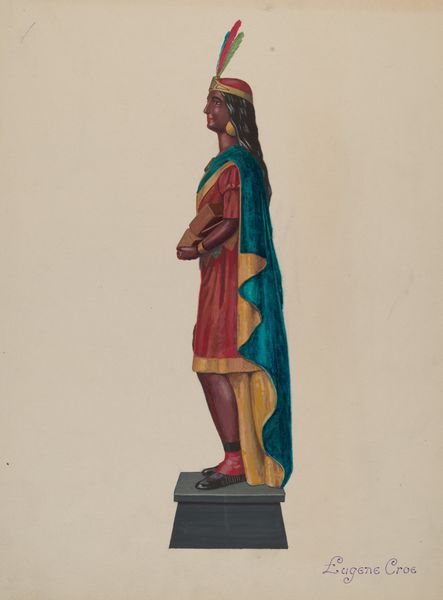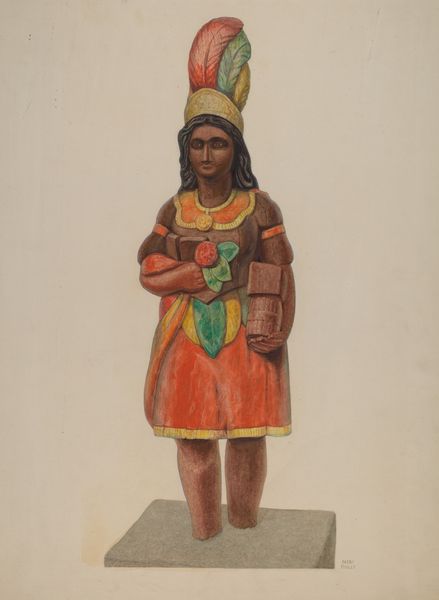
drawing, watercolor
#
portrait
#
drawing
#
charcoal drawing
#
figuration
#
watercolor
#
coloured pencil
#
portrait drawing
#
watercolour illustration
#
watercolor
Dimensions: overall: 58 x 38.8 cm (22 13/16 x 15 1/4 in.)
Copyright: National Gallery of Art: CC0 1.0
Curator: This piece, created between 1935 and 1942 by an anonymous artist, is entitled "Cigar Store Indian." It's rendered with watercolor, charcoal and colored pencil. Editor: Well, right off the bat, the figure strikes me as… unexpectedly delicate. The pastel colors, the somewhat hesitant linework – it contrasts so starkly with the typical idea of a stoic, wooden Indian figure. It feels fragile. Curator: Indeed. It's interesting to consider how these cigar store figures, traditionally objects of commercial advertising, also functioned within a larger societal context. They reflect a specific, and problematic, romanticization of the "Native American" during a period of significant social and political upheaval. These figures became ubiquitous cultural symbols. Editor: Absolutely. The use of what appear to be mass-produced art materials – watercolor, pencil – highlights this very tension between the creation of this single object and mass cultural representation. It was produced no doubt following some pattern book, and perhaps this accounts for its visual restraint? Curator: Perhaps, and there is the odd inscription and text shown on its pedestal which are obviously brand names or place-names linked to the tobacco industry at that time. We also shouldn’t forget these images acted as signifiers for places of commerce and also coded information. Editor: It's intriguing to think about the labor involved in creating these drawings of what are essentially copies. They reveal much about taste, how these figures became emblems tied to notions of the frontier and consumer culture, really inviting us to ponder its social dimensions and its strange transformation from art to commodity. Curator: Exactly. By examining the "Cigar Store Indian," we can expose these hidden dynamics that contribute to the ways in which certain images become icons, for better or worse, inside the landscape of American material culture. Editor: For me, reflecting on its making provides critical awareness of the complexities of value and artistic processes, and just what kind of cultural work images can do when circulated widely, Curator: Ultimately, art historical study sheds light on those narratives, asking important questions about the social roles that seemingly simple images are made to perform.
Comments
No comments
Be the first to comment and join the conversation on the ultimate creative platform.
